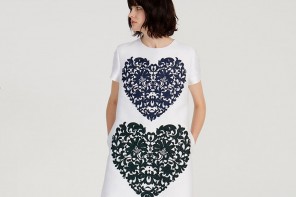Written by: Giulia Simolo
If you intend on making a difference when it comes to what you wear, it’s in your best interest to get informed about what fabrics are eco-friendly. In this way, you can make the best clothing choices for you and your family.
Sometimes it’s not always easy to know what fabrics are kind to the earth, especially when there are conflicting reports doing the rounds. So, here are five eco-friendly fabrics to look out for during your next shopping trip as well as the lowdown on how eco-friendly they are.
Organic cotton
There has recently been a global demand for organic cotton because of its benefits. Organic cotton is produced using only natural fertilisers, pesticides and phosphates, thus making it safer for farm workers and a healthier bet for the environment, too. Although going organic when it comes to cotton is better than non-organic, it’s worth noting that the cotton plant always requires a large amount of water during production. So if this is a concern for you, there are other more eco-friendly fabrics to choose from.
Hemp
Hemp is a great eco-friendly fabric because it is a natural fibre that is very durable. Added to this, it doesn’t stretch easily, is resistant to mould and the more you use clothing that is made of hemp, the softer they become. Hemp is regarded as a very sustainable product that scores high marks in the longevity stakes, thus being kind to the environment in more ways than one. When hemp is grown it is not taxing on the earth as it is able to produce more just by using the same amount of land as cotton and flax!
Soy
Soy is softer than cotton, durable, absorbent and lightweight. It is made from discarded tofu and is considered to be a very sustainable fibre. It is often referred to as “vegetarian cashmere” because it is such a luxurious material. Leftovers during the tofu manufacturing process are gathered, turned into liquid and then made into filaments that are spun to create material. The use of soy in clothing production is a great example of how we can use our waste to create new products, without having to use the earth’s already limited resources to make something new.
Bamboo
Bamboo is a rapid grower and doesn’t require pesticides or herbicides in order to grow. It also uses very little water and can grow in dry or wet conditions. The bamboo plant is self-replenishing and has a lower impact on the environment than cotton farming methods. It is also completely biodegradable. Of course, depending too much on bamboo as an eco-friendly material can cause pressure on our bamboo forests, especially when it concerns the making of paper, but that’s why further research is needed to find ways to substitute bamboo for other materials in the long-term. When buying bamboo, make sure that you’re getting the real deal and not rayon that is being disguised as bamboo. The use of rayon is seen as contributing to the depletion of the world’s forests, so make sure you opt for bamboo linen that is a purer alternative.
Flax
Flax is a crop that’s very sustainable because it has a short growing cycle. Within about three months, flax can be harvested. It also requires a small amount of fertiliser and pesticides, which is always a bonus. Another great thing is that nothing of the flax plant goes to waste – every part of it can be used in the manufacturing process. Linen made from flax is very soft, breathable and durable. It is a great material to have in your wardrobe because it gets better with wear. The more you wear it, the more comfortable it becomes, thus preventing you from having to throw it out and replace it with new clothing.
When shopping for eco-friendly clothing, it’s worthwhile to ask yourself: How is the product made? And, is it sustainable? Another important tip is to read the label so that you know what the product consists of and you learn how to look after your green clothing so that it offers you many years of fabulous wear.
The liveeco team









